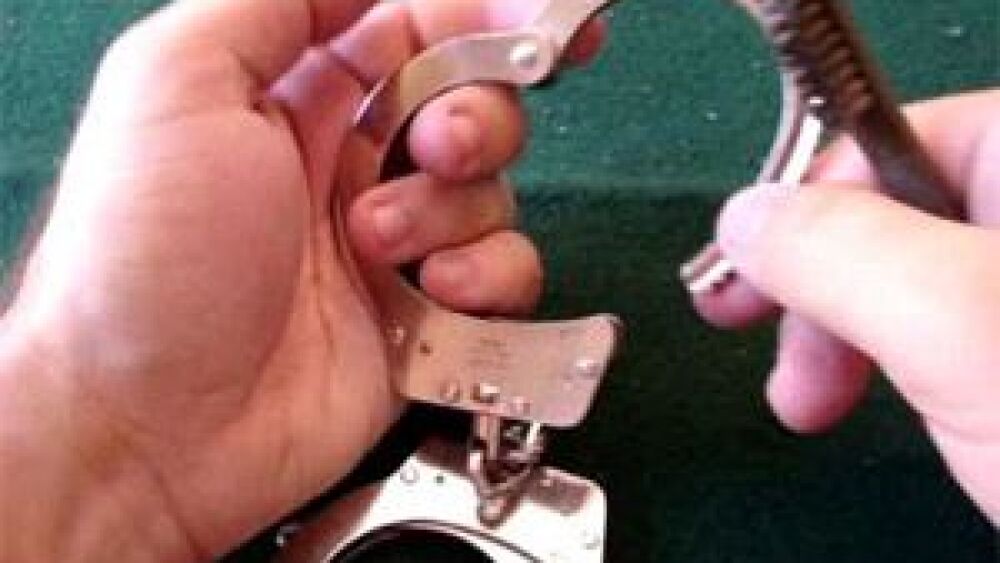By Neil C. Held, C1 Contributor
I’d like to share some of my thoughts on handcuffing — more specifically, my thoughts on the handcuffs themselves. First off, buy a good set of stainless steel handcuffs. I prefer to stay away from the partial-plastic, double-bar construction as they are easier to break and easier to pick.
Next, chained or hinged? It’s personal preference. Chains offer more maneuverability when apply cuffs, but they also offer the suspect more mobility when cuffed. Hinged are exactly the opposite — less maneuverable when applying and more restrictive for the subject when cuffed. If you’re not sure what to buy, ask someone you trust (NOT the guy at the uniform store selling you your cuffs!).
Remember that like a baseball glove, your cuffs need to be oiled, and they need to be broken in.
Handcuffs need to be regularly oiled and maintained, especially if they become soiled. Cuffs damp from rain and snow will corrode. Alcohol cleaners can kill pathogens, but can be corrosive to metal. I use an oil that’s impregnated with Teflon, so a residue is left on them upon drying.
Once or twice a year, I will give my cuffs a good soaking in the department’s lubricant bath or ultrasound cleaner. Just be sure to blow off the excess oil as the internal workings can become gummed!
Hear me, rookies! You need to break in your cuffs! While you’re driving to and from the academy, get ‘em out. Fold the cuffs like they’re in their holster, and press the single bar on your leg or the seat so it pushes through, “cycling” the cuff. I do this every time I buy a new set, or rotate a set from my bag to keep the wear even on all my cuffs.
Now, the topic of placement on your belt. I carry two sets — some carry one, some carry three — which, again, is personal preference, and somewhat dictated by your mission. I’m right-handed, and my primary set of cuffs are carried on my left side, three to four inches away from the belt buckle, in an open-top holster with the keyholes toward each other, single bar forward, toward my belt buckle from the left. My second set — same style cuff and holder — on my right side, above my right buttock, behind my weapon, carried in exactly the same way (single bar forward my belt buckle from the right). Placement on the belt is key. I can get to either set of cuffs with either hand. You know how important this can be if you’ve ever been scrambling for a cuff. I know I have.
But why is it important that the keyholes are together and the single bar toward the belt buckle? Easy. It’s about repetition and muscle memory. That way, when you pull your cuffs, you don’t have to fiddle around and take your eyes off your suspect in order to apply them. Single bars are always down, keyholes always toward you. Then cuffs are applied exactly as in Joe Ferrera’s textbook Terry Search video.












